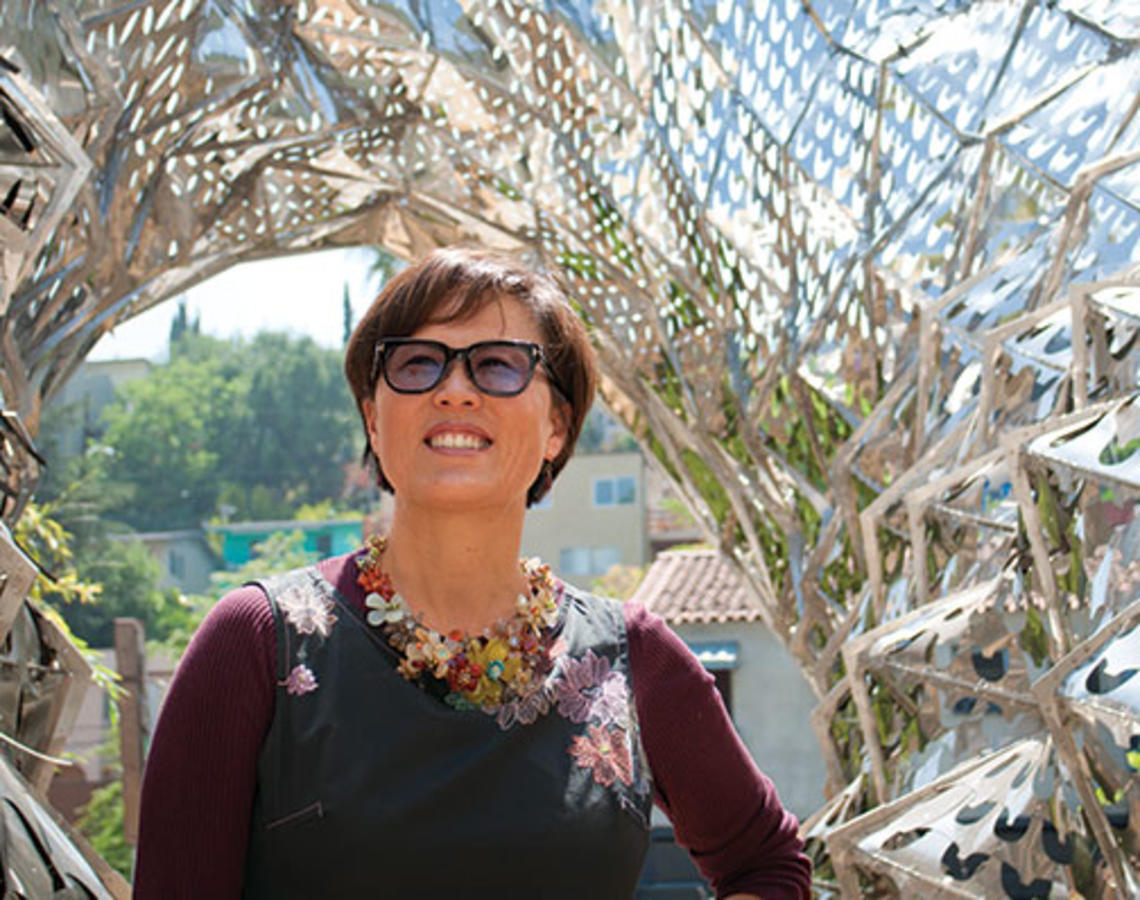Doris Kim Sung ’86: Breathable Buildings
Designing surface materials that respond like human skin

Can building walls regulate their temperature like human skin? Architect Doris Kim Sung ’86, an assistant professor at the University of Southern California, is intrigued by the possibility of buildings that can breathe. Self-ventilating buildings, Sung believes, have major potential for sustainable architecture.
As an architecture graduate student at Columbia, Sung began questioning why buildings were so “static.” To “animate the inanimate,” she began experimenting with materials that move independently in response to the environment, consuming zero energy and requiring no controls. One possibility is using thermo-bimetals to create responsive skins that self-regulate building temperature. Bimetals are created by laminating two thin sheets of metals that expand at different temperatures, causing the metal to curl when heated.
Bimetals are not a new invention — the tight coils used inside most household thermostats for the past century are bimetals. Sung is finding new uses for the material, creating tessellated skins — small geometrically fitted tiles — that react to the sun, curling or unfolding in response to temperature fluctuation. She hopes these building skins can significantly decrease the need for air-conditioning.
In action, bimetal skins appear plant-like. Sung’s recent installation Bloom, displayed in 2011–12 outside a Los Angeles gallery, is a bimetal structure resembling a gigantic orchid and comprised of 14,000 tiles. Sung hopes to use the design of Bloom’s bimetal skin to create energy-efficient buildings that can regulate their own interior temperature. Each tile in Bloom is slightly different, and the varying sizes, shapes, and positions allow the tiles to respond optimally to temperature fluctuations. “A brick wall is the same shape over and over again,” Sung says, “but if you look at a fish, each scale is a unique size and conforms to its specific location.” She envisions the same kind of differentiation used in Bloom being applied in actual buildings: building skins designed differently for the top and bottom of a structure, for a shaded north-facing wall and a sunny southern exposure.
Sung draws inspiration from the natural world: human skin, fish scales, a grasshopper’s breathing system. That is not surprising: At Princeton, Sung began as a biology student before switching to architecture. “I’m fundamentally a science person,” she says.
In addition to the bimetal skins, Sung is developing window systems that sandwich bimetal patterning between double-glazed panels, which would allow windows to regulate the quantity of sunlight and heat entering the building. Both the window systems and the skins still are in a prototype phase, and Sung is unsure of the cost to produce them or the amount of energy that would be saved. She hopes that both will be on the market in the next few years.
Meanwhile, Sung continues to experiment with materials that respond to the environment to create sustainable architecture. She is experimenting with making plastics perform like bimetals, and designing bimetals that mimic the rapid curling of touch-me-not ferns. Thinking ahead, she wonders if organic materials can be incorporated into responsive building materials. As she says, “The field is so wide open! It’s an exciting future.”











0 Responses